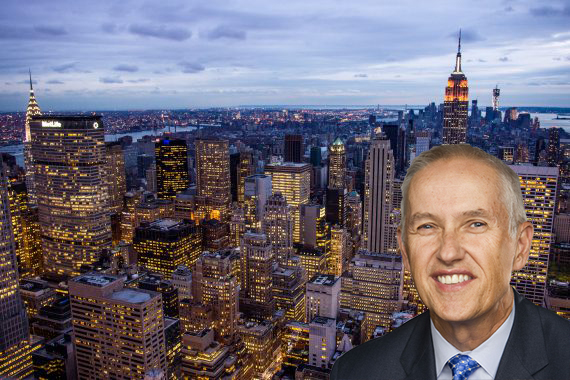Trending
REBNY gripes that building costs in rezoned Midtown East would soar above $2,300 psf
Org says it would have to charge tenants an average of $204 psf to make projects feasible

Despite supporting the bulk of the city’s plan to rezone Midtown East, the Real Estate Board of New York is concerned that the price tag for building will scare away developers.
“The cost for a new office building, even after providing for higher FARs, is prohibitively expensive in Midtown East,” Michael Slattery, senior vice president of REBNY, said during a hearing held by the Manhattan Borough Board on Friday. “Site acquisition costs on the avenues with the highest FAR, such as Park Avenue, exceed $1,000 per square foot.”
He said REBNY estimates total development costs to be around $2,340 per square foot in the district. The estimate includes the cost of acquisition, construction, demolition, air rights, soft costs, loss of revenue during construction and other expenses. The figure was based on a survey of roughly half a dozen REBNY members who are active in Midtown East, Slattery said. The survey focused on what building out a hypothetical Park Avenue office property — the priciest in the district — would entail. Slattery said this would require landlords to charge average rents of $204 per square foot to make the projects feasible.
He said these costs could be eased by allowing larger as-of-right development on mid-block Sites And Along Third Avenue (which don’t get the same size perks as Park Avenue and areas near Grand Central Terminal).
A major point of contention is the inclusion of the east side of Third Avenue in the rezoning. Kathy Thompson, a member of Community Board 6 and a resident of Turtle Bay, said the rezoning mischaracterizes that area as purely commercial when it includes the west side of Turtle Bay, a “thriving” residential neighborhood. She urged officials to move the border for the subdistrict to the middle of Third Avenue, from 43rd to 56th Street.
“Anything less than this is the willful destruction of a neighborhood by the city of New York,” she said.
Slattery said excluding Third Avenue, where acquisition costs are lower than other parts of the district, would be a “lost opportunity to revitalize” Midtown East. A representative for the Regional Planning Association also noted that she would actually support extending the district’s border to Second Avenue to Incorporate The Second Avenue subway.
Thursday’s hearing was a required step in the Uniform Land Use Review Procedure (ULURP), a seventh-month slog through community boards, the borough board, the City Planning Commission and the city council. The planning commission started ULURP in January. The rezoning is aimed at revitalizing the area’s aging office stock, so residential and hotel construction is restricted.
In August, the city released plans to rezone 78 blocks in the subdistrict, calling for the addition of 6.5 million square feet of commercial space over the next 20 years or so. Under the rezoning, developers could build above existing floor-area-ratio (FAR) restrictions by either taking on pre-determined transit improvements or buying from a pool of 3.6 million square feet of air rights from landmarked buildings in the district.
A portion of the proceeds from those sales — 20 percent — will be contributed to a “Public Realm Improvement Fund” for additional infrastructure projects. The air rights have a proposed floor price of $393 per square foot, meaning that the city receives a minimum of $78.60 per square foot.
The restrictions surrounding the air rights has been a major source of debate. REBNY, the Archdiocese of New York and others on Thursday again voiced concerns about setting a floor price for the air rights, saying it may discourage deals. A representative for the Archdiocese asked that the city take no more than 20 percent of these sales because a bigger cut could prevent landmarks from paying for necessary repairs.
The rezoning would also allow buildings that are considered “overbuilt” — meaning they exceed current FAR rules — would be able to rebuild their excess square footage as of right and would be required to contribute to the public improvement fund.
Councilman Dan Garodnick, who appeared at the hearing briefly, noted that the city is in a “much different position” than it was four years ago, when the Bloomberg administration’s proposal to rezone the district was killed. He said the latest plan is more “thoughtful” about incorporating public improvements and protecting landmarks.
“But it’s officially just the very beginning of the process,” he said.




